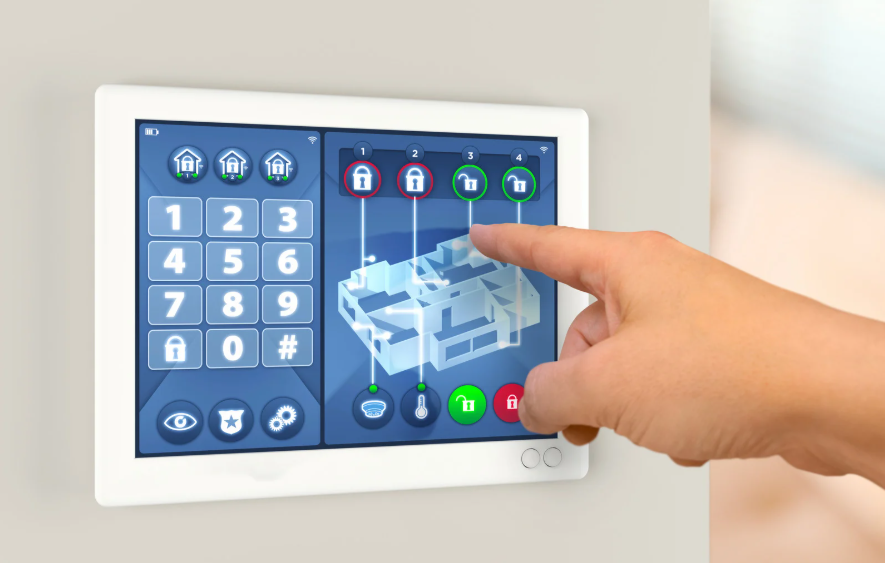In today’s rapidly evolving world, where technology is advancing at an unprecedented pace, businesses and property owners are increasingly turning to Smart Building Management Systems (BMS) and Internet of Things (IoT) solutions to maximise operational efficiency. These cutting-edge technologies are transforming how buildings are managed by streamlining processes, improving energy consumption, and creating smarter, more sustainable environments. With the added pressure of sustainability goals and the rising costs of energy, smart technologies are key in making buildings more efficient, eco-friendly, and cost-effective. In cities like Singapore, where urbanisation and sustainability go hand in hand, adopting Smart Building Management Systems can significantly enhance building performance.
Understanding Smart Building Management Systems (BMS)
At the core of modern building operations lies the Smart Building Management System, a centralized control platform designed to manage and optimise various building functions. A Smart Building Management System integrates different systems, such as HVAC (heating, ventilation, and air conditioning), lighting, security, and energy management, into one cohesive unit. This centralised approach provides operators with real-time visibility and control, ensuring that all aspects of the building are functioning efficiently. The adoption of Smart Building Management Systems is essential in managing resources more effectively while providing a better experience for occupants.
The Role of IoT in Smart Building Management
The Internet of Things (IoT) plays a crucial role in the effectiveness of Smart Building Management Systems. IoT connects various smart devices, such as sensors, cameras, and thermostats, to a centralised system, allowing them to exchange data and work in unison. For instance, an IoT-enabled HVAC system can adjust temperatures based on real-time data gathered from occupancy sensors. These sensors also monitor air quality, lighting, and energy usage, which feed into the Smart Building Management System to provide more accurate insights and automated responses. The seamless integration of IoT devices with Smart Building Management Systems in Singapore can lead to more energy-efficient operations, reducing both energy costs and environmental impact.
Key Benefits of Smart BMS and IoT Solutions
Energy Efficiency & Cost Savings
One of the most significant advantages of Smart Building Management Systems is the ability to reduce energy consumption and operational costs. By automating systems such as lighting, heating, and cooling, Smart Building Management Systems ensure that energy is used only when and where it is needed. For example, lighting can automatically adjust to natural light levels or occupancy, while HVAC systems can be regulated based on real-time data. This level of efficiency can significantly lower utility bills and reduce the building’s carbon footprint, making it a valuable solution for businesses in Singapore that are looking to meet sustainability goals while cutting operational costs.
Enhanced Security & Safety
With the integration of security systems, Smart Building Management Systems can enhance the safety of a building by monitoring access points, tracking movement within the premises, and even detecting anomalies such as smoke or water leaks. IoT devices, including smart cameras, motion sensors, and alarms, work together to ensure comprehensive building security. In Singapore, where high-rise buildings and commercial establishments are common, the ability to integrate security systems with a Smart Building Management System can provide peace of mind to building managers and occupants alike.
Predictive Maintenance
Another key benefit of Smart Building Management Systems is their ability to predict when maintenance is needed. Through the use of IoT sensors, systems like HVAC, elevators, and plumbing can be monitored continuously, with real-time data fed into the Smart Building Management System. If an anomaly is detected, such as an unusual drop in temperature or increased energy consumption, the system can trigger maintenance alerts, allowing for preventive action before any major failure occurs. This predictive approach can extend the lifespan of building systems and reduce costly downtime or emergency repairs, which is particularly beneficial for large commercial properties in Singapore.
Improved Occupant Comfort
Smart technologies within Smart Building Management Systems can also enhance occupant comfort. With automated lighting and climate control systems, building occupants can enjoy optimal conditions without the need for manual adjustments. These systems can adjust the indoor environment based on occupancy, weather conditions, and personal preferences. In Singapore, where the tropical climate demands constant climate control, the ability to maintain comfortable indoor conditions without wasting energy is a major advantage for both residential and commercial properties.
Implementing Smart Building Management Systems & IoT Solutions
Assessment & Planning
Implementing a Smart Building Management System requires careful assessment and planning. The first step is to define the goals of the system, such as energy savings, improved security, or enhanced comfort. Building managers must also assess the existing infrastructure to determine which systems need to be integrated. Whether upgrading an existing system or installing a new one, working with experts who understand the complexities of Smart Building Management Systems is essential for a smooth implementation.
Choosing the Right Technology
Selecting the right technology is a critical part of implementing Smart Building Management Systems. In Singapore, where technological advancements are embraced, there are numerous BMS solutions available in the market. Property owners need to choose scalable systems that meet their specific needs. Cloud-based solutions, for example, offer flexibility and ease of access, while IoT devices can be selected based on compatibility and functionality. The right combination of hardware and software ensures that the system runs smoothly and delivers maximum benefits.
Integration & Connectivity
For a Smart Building Management System to function effectively, it must integrate seamlessly with various building systems. These can include HVAC, lighting, security, and energy meters. Connectivity is key, as it allows devices to communicate with each other and with the central management platform. In Singapore, where the need for smart infrastructure is growing, interoperability between systems is critical to creating truly smart, integrated buildings.
Data Security & Compliance
Given the vast amount of data generated by Smart Building Management Systems, security must be a top priority. As buildings become more connected, they become more vulnerable to cyber-attacks. Property owners must implement strong cybersecurity measures to protect data and ensure compliance with local regulations. In Singapore, where data privacy laws are stringent, ensuring that Smart Building Management Systems meet regulatory standards is crucial for legal compliance.
Industry Use Cases & Real-World Applications
Commercial Buildings & Offices
In commercial properties, Smart Building Management Systems can optimize energy consumption, improve space utilization, and enhance tenant satisfaction. Automated lighting, temperature control, and occupancy monitoring help reduce operating costs while creating a comfortable environment for employees. Many businesses in Singapore are adopting these systems to remain competitive and reduce overhead costs.
Smart Homes & Residential Complexes
In residential settings, Smart Building Management Systems provide added convenience and efficiency for homeowners. Features such as automated climate control, smart security, and energy monitoring are becoming increasingly popular in Singapore, where tech-savvy residents demand more advanced living solutions.
Healthcare Facilities
Healthcare facilities, with their stringent requirements for safety and comfort, benefit from Smart Building Management Systems that monitor air quality, ensure optimal lighting for patient recovery, and provide real-time security. IoT devices help keep operations running smoothly and prevent issues such as equipment failure, which can have serious consequences in a hospital setting.
Manufacturing & Industrial Plants
In manufacturing facilities, Smart Building Management Systems contribute to reducing energy usage, improving worker safety, and ensuring efficient production processes. Sensors can monitor machinery, detect malfunctions early, and prevent unplanned downtime. These systems help keep industrial operations in Singapore running at peak performance while maintaining cost efficiency.
Future Trends in Smart Building Management & IoT
As the technology continues to evolve, several exciting trends are shaping the future of Smart Building Management Systems. Artificial intelligence (AI) and machine learning will enable even more advanced automation and predictive capabilities. The arrival of 5G connectivity will further enhance IoT device integration, enabling faster communication between devices. In Singapore, where smart cities are becoming a reality, the rise of digital twins—virtual replicas of buildings—will allow for real-time simulations and performance optimizations.
Takeaway
Smart Building Management Systems and IoT solutions are transforming the way buildings are managed. These technologies provide unmatched benefits, including energy savings, cost reduction, enhanced security, and improved occupant comfort. For businesses in Singapore, investing in smart systems is an essential step towards achieving sustainability goals and creating more efficient, future-proof buildings. As the demand for smart, connected buildings continues to rise, embracing Smart Building Management Systems is not just a trend but a necessity for long-term success.











